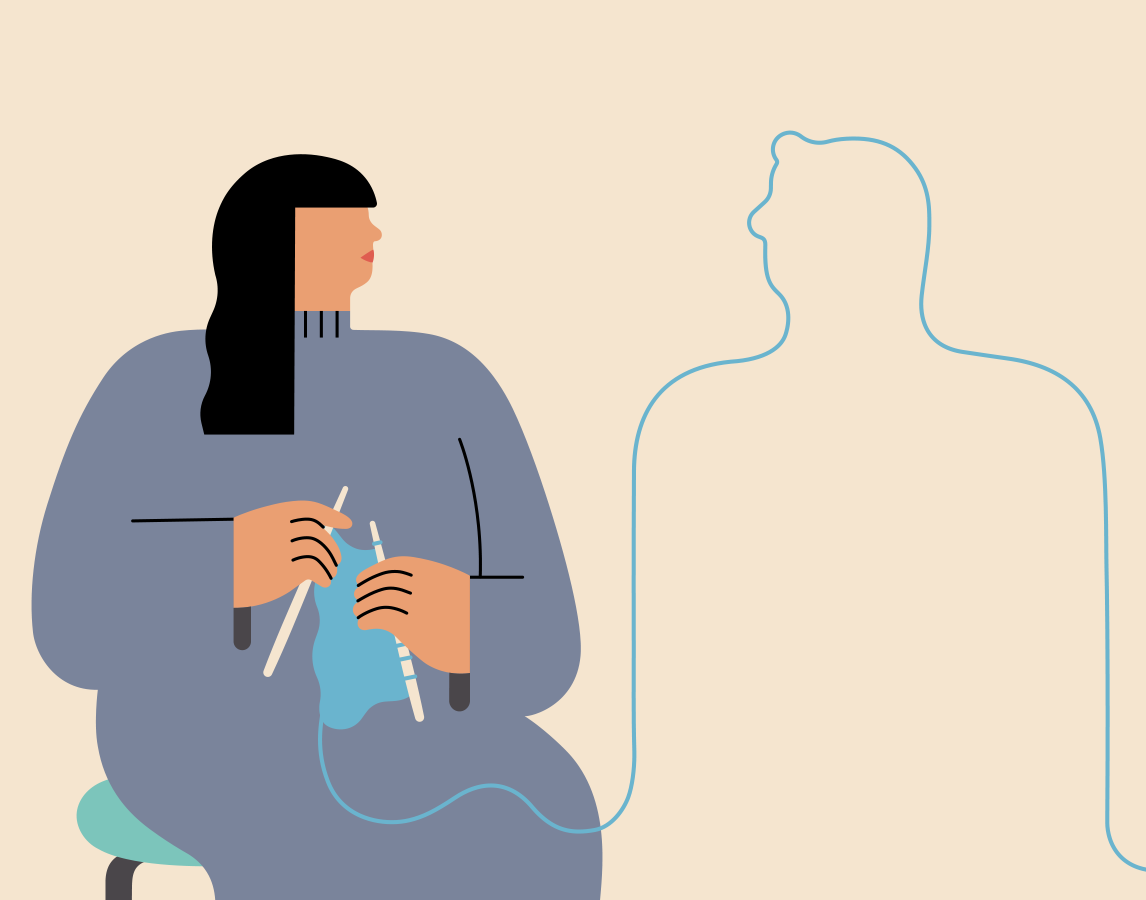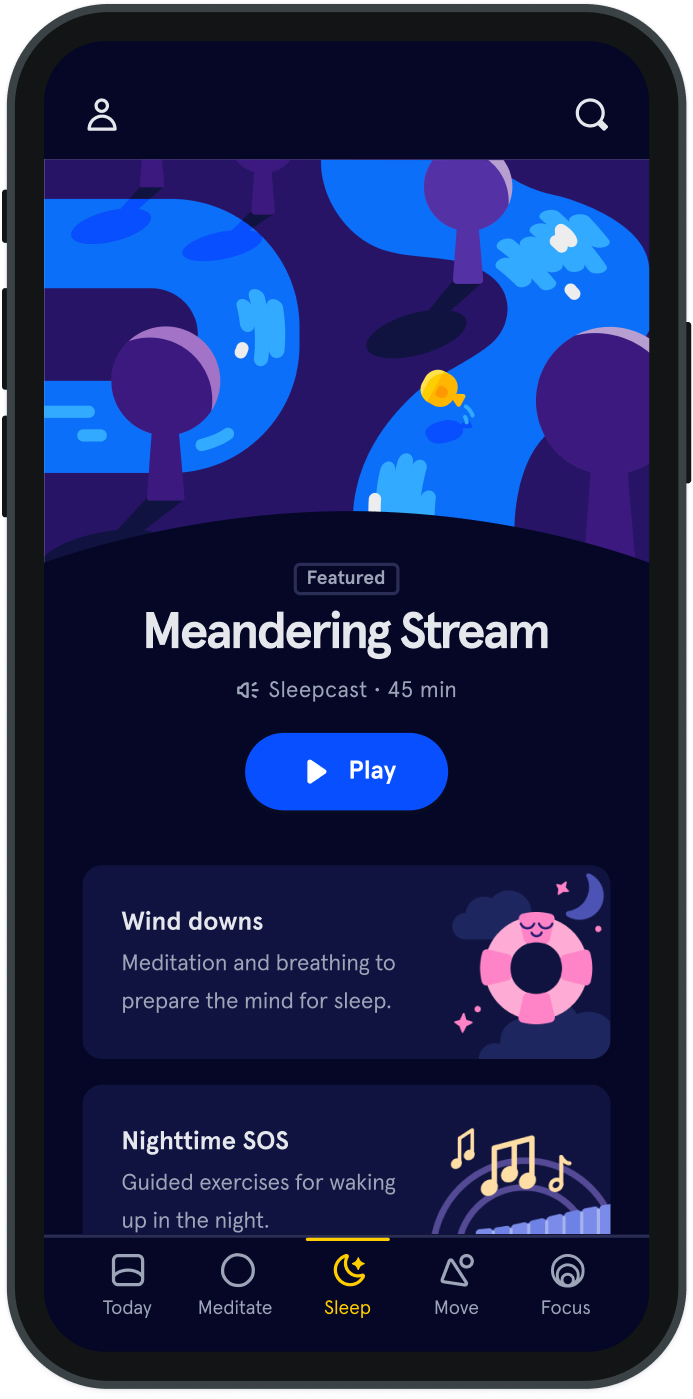The After Series: Stitch by Stitch
We spend so much of our waking lives avoiding death—in more ways than one. When it comes to talking about the inevitable, it isn’t always easy. So the Orange Dot is aiming to shine a light on these stories, in hopes that it may help others. The After Series features essays from people around the world who’ve experienced loss and want to share what comes after.
In preparation for my daughter's first birthday, I started knitting her a sweater.
She seemed to be growing out of clothing before I could blink and I knew it would take me longer than anticipated, so I settled on a larger size. The yarn was fingering weight and pale blue with other colors speckled throughout, and I selected a simple stockinette pattern adorned with a seed stitch heart in the center of the chest.
I had taught myself to knit one winter in my early twenties. I was working per diem in a gear shop in a New England tourist town, which is to say, I had few customers and a certain amount of time on my hands. On my third try, I finally found a book with instructions and images that made sense to my brain. Several poorly constructed scarves later, I branched out into hats, baby blankets, and more intricate stitches, slowly adding to my repertoire as the years went by.
This was my first attempt at a sweater. In the evenings, I worked slowly, sometimes in increments of just a few rows. It being a new challenge, the project was an engrossing task and required my full attention, which was difficult to attain and also much needed. While I knitted this sweater for my daughter stitch by stitch, her father was dying, the tumor in his brain proliferating, cell by agonizing cell.
My head swirled with seizure medication doses, treatment plans, and his looming prognosis, as well as work, classes, and daycare schedules. The sweater was a distraction and if I was going to work on it, I couldn't think about anything else. It was a desperately needed mental reprieve.
When I first started the sweater, you could barely tell that my husband was sick. By the time I sought out my neighbor to help teach me how to pick up the stitches at the neckline of the sweater's body, his health and function had declined significantly. When I had all the sweater pieces completed and was finally ready to sew them together, both his body and brain were starting to fail and we knew the end was coming, we just weren't able to admit it yet.
When my husband had his second "awake" brain surgery, I worked on the sweater. When the radiation sapped all of his energy, I worked on the sweater. When we tried unsuccessfully for another baby, when the chemotherapy failed, and when he struggled to speak our names, I worked on the sweater. When it came time to sew all those pieces together, to complete the final seams, I stalled. Somehow, in my mind, finishing the sweater was a final act and meant that the inevitable might then come. It paved the way for the possibility. I knew it was illogical, that it had no basis in reality, but the thought persisted. Every time I picked up the needle to sew those seams, I set it back down again. For weeks and months, it lay untouched as I worked to overcome my dread.
I did eventually finish the sweater, and as predicted, it was long after my daughter's first birthday when it was completed. My husband was able to see her wear it many times before he died, which was not long after her third birthday, and she wore it for a couple of years before she outgrew it and I tucked it away in the cellar.
Despite my years of practice and frequent enthusiasm, I am still not a very good knitter. I constantly have to reteach myself stitches and techniques that I learned years ago and often many times since. I drop stitches and reverse them and miscount rows. My projects usually turn out well, but they are never perfect, never even close.
It's been over a decade since I taught myself how to knit, and nearly three years since my husband's death, and I still turn to knitting as a kind of inexact but necessary practice. Some patterns are easy and repetitive and soothing in their methods. Others are exceptionally intricate and infuriating in their precision and difficulty. Whether simple or complex, each knitting project I undertake serves to separate me from my thoughts for a while. It forces me to step back, to disengage and focus all at once. This departure from my thoughts often leaves me with a little clarity and something resembling peace.

When I first started the sweater, you could barely tell that my husband was sick.
Sarah Kilch Gaffney


Be kind to your mind
- Access the full library of 500+ meditations on everything from stress, to resilience, to compassion
- Put your mind to bed with sleep sounds, music, and wind-down exercises
- Make mindfulness a part of your daily routine with tension-releasing workouts, relaxing yoga, Focus music playlists, and more
Meditation and mindfulness for any mind, any mood, any goal

Stay in the loop
Be the first to get updates on our latest content, special offers, and new features.
By signing up, you’re agreeing to receive marketing emails from Headspace. You can unsubscribe at any time. For more details, check out our Privacy Policy.
- © 2025 Headspace Inc.
- Terms & conditions
- Privacy policy
- Consumer Health Data
- Your privacy choices
- CA Privacy Notice
